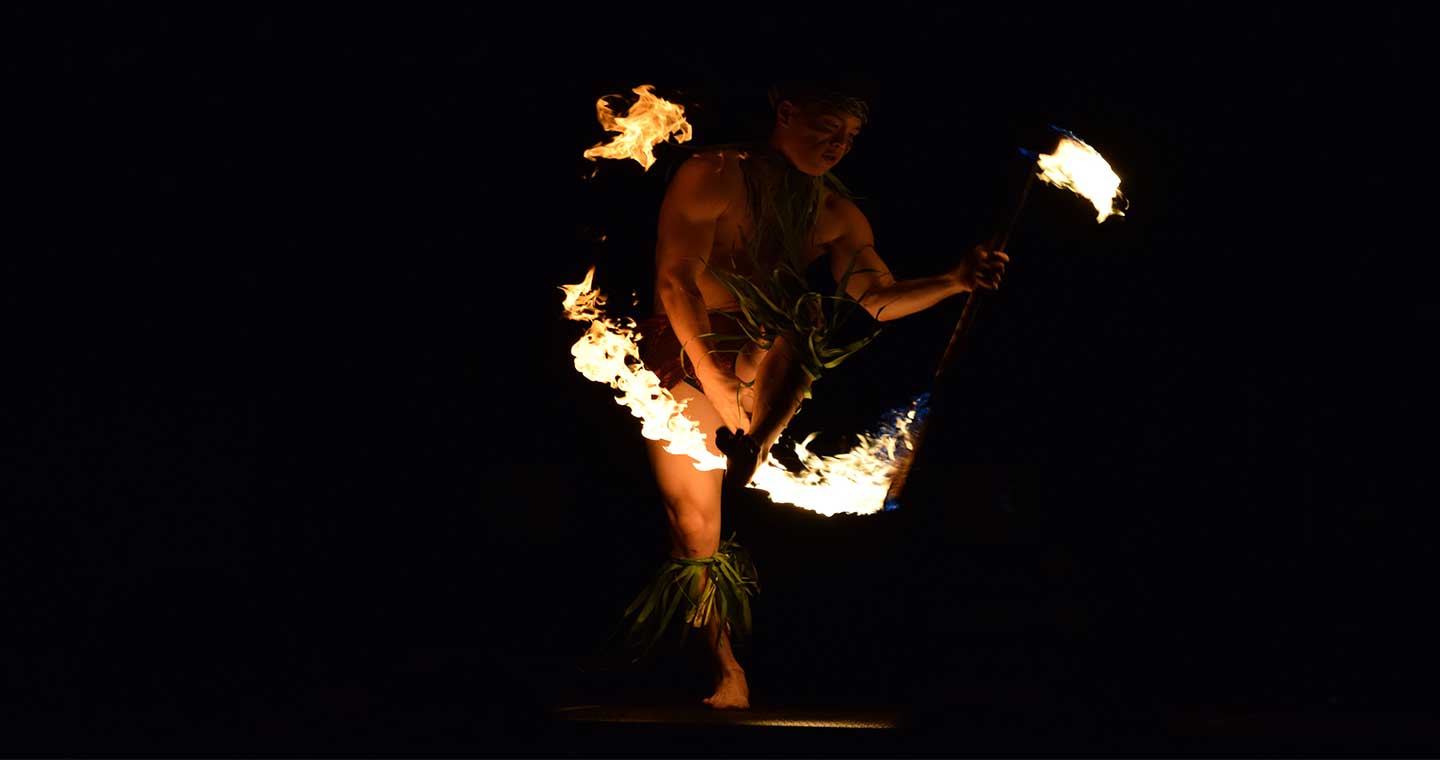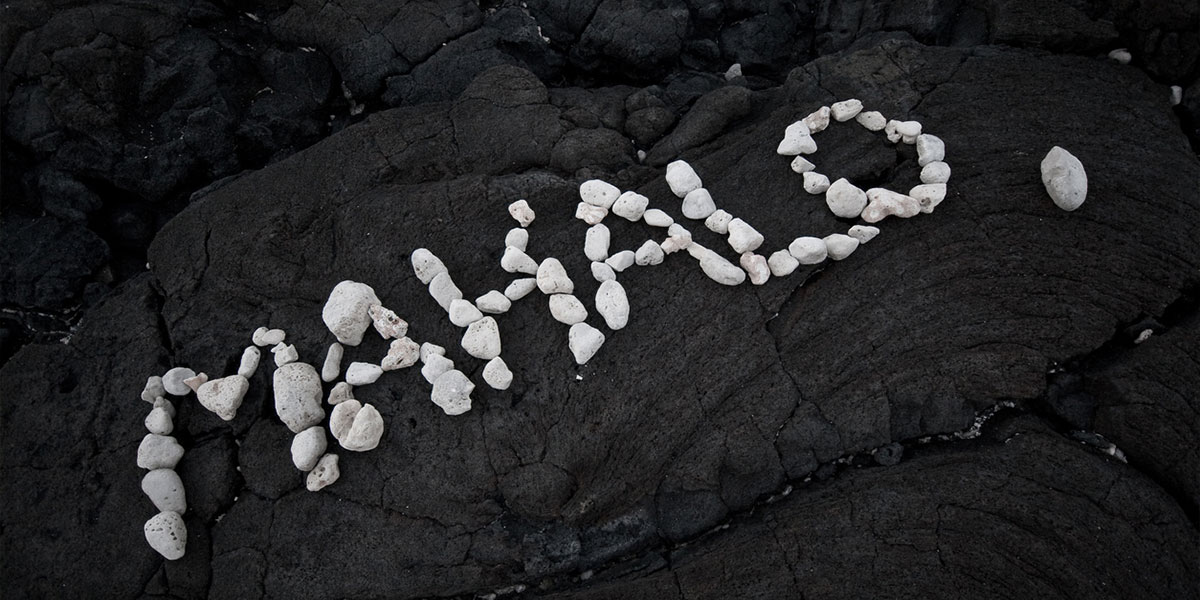The beautiful Hawaiian culture is unlike any other. Symbolism is steeped in many of the customs such as Lu’au festivals, the flowers in leis, and in how people greet each other. Even the unique Hawaiian language holds an entire world of history and meaning.
Now considered endangered, the Hawaiian language is spoken mainly by those who live in Hawaii. However, the language holds weight across the Pacific with Hawaiian speakers in nations like Guam, Micronesia, and Polynesia. Before you stay with us at our Big Island bed and breakfast, we recommend you practice a few Hawaiian phrases to show respect to the people you’re visiting. While English is spoken throughout Hawaii, you may come across English Pidgin, a hybrid language created at a time when native Hawaiians needed to communicate with foreigners.
At the Volcano Village Estates, you will have plenty of opportunities to experience Hawaiian culture first-hand. Attend a private hula class and make new friends. You can also learn how to create an authentic lei from a wide selection of beautiful and symbolic flowers. Test your new vocab skills with us!
Read on to learn more about the significance of the Hawaiian language, how to show respect for it, and simple phrases you can take with you on your vacation to the Big Island!
Origins and History of the Hawaiian Language

The aboriginal people of Hawaii, the Kānaka ʻŌiwi, are descendants of Polynesians who migrated to the islands many centuries ago, as far back as AD 400. It is theorized that the language was brought over from the islands of Tahiti and Tonga. Over time, the Hawaiian language has been influenced by several cultures, and the written alphabet was adapted to the spoken word when introduced by Roman Catholic missionaries in the early 19th century. The Hawaiian name for their language is ‘Ōlelo Hawai‘i.
When the kingdom of Hawaii was overthrown in 1893, a law was instituted banning the instruction of the language. It wasn’t until the 1970s when a cultural renaissance brought the dialect back from the brink of extinction. Educators established preschools where children engaged with native-speaking elders. This effort worked and students today can obtain college degrees in the language. Hawaii is now the only US state to have two official languages!
Cultural Significance of Language in Hawaii
The Hawaiian language is spoken as a way to connect to ancestors, tell legends, and appreciate traditions with a deeper meaning. Reviving it is a critical part of preserving the culture. Learning and speaking Hawaiian will allow you to understand the people and their connections to nature and each other.
After coming close to a total wipe-out, the dialect quickly became a pillar of Hawaiian way of life once again. Street signs began using the Hawaiian alphabet. Authors and filmmakers began recording stories and telling their own perspectives, safeguarding the history and significance of the language. Natives see their language as “a framework of how [they] see the world.”
Music is known as the universal language. Hawaiian is no stranger to this idea. The importance of music in Hawaiian culture is rooted in some of its oldest traditions. The art of Hula combines unique instruments with traditional chants sharing ancestral stories and knowledge. At our Hawaii bed and breakfast, our local Kumu (instructor) will walk you through a one-hour private instruction of the history and moves of this lovely dance.
Lu’aus are festivals where you can feast on traditional foods like poi, made from taro root, and the famous Kalua pig as the main course. Exciting music brings the spirit of a Lu’au to life where everyone can engage in song and dance. Our staff at Volcano Village Estates can help you find a spectacular Lu’au to attend during your stay!
Basic Hawaiian Phrases for Beginners
Before you come visit us at our bed and breakfast, we recommend you learn a few every-day phrases to enhance your Hawaiian experience. The Hawaiian alphabet consists of 13 letters. Uniquely, every word and syllable end in a vowel. You will see symbols such as the ‘okina, a backwards apostrophe (‘), which is the glottal stop consonant. The kahakō, a symbol that looks like a line (-), is placed over a vowel to make it a long vowel. Simply drag the vowel a bit longer to pronounce it properly.
Here are some basic greetings and expressions:
- Aloha (A-lo-ha) – hello, goodbye, greeting meaning love
- Aloha kakahiaka (A-lo-ha kah-kah-hee-yah-kah) — good morning
- Aloha ‘auinalā (A-loh-ha ah-wee-na-lah) – good afternoon
- Mahalo (Mah-hah-lo) – thank you
- ‘A’ole pilikia (Ah-oh-leh pee-lee-kee-yah) — you’re welcome/no problem
- E komo mai (Eh ko-mo my)— welcome, come in
During your stay with us, you will also hear English Pidgin, Hawaii’s third language. Essentially, it is a hybrid of Hawaiian and English. While Pidgin is considered a local attraction, it’s best not to attempt to speak it unless you are fluent. It can be sensed as mockery or disrespect. Here are some common phrases you may come across:
- Howzit? – How are you?
- Lua – bathroom
- Grind(z) – to eat, food, meal
- Broke da mouth – delicious
- Brah – refer to someone casually, short for brother or ‘braddah

Resources for Learning Hawaiian
You, too, can be a part of the Hawaiian language revival! While you may not be fluent by the time you arrive at our Hawaii bed and breakfast, the little steps you take will go a long way. Practice the phrases above to leave a good impression. Use this Pronunciation Guide to help train you with the nuances. Once you reach the Big Island, use Hawaiian place names whenever possible.
There are many online resources available to assist in your basic learning. In response to the cultural revolution to bring back the education of ‘Ōlelo Hawai‘i, Kamehameha Schools produced 24 video lessons, a collection known as Kulāiwi. Each video is about an hour long, and available free on YouTube. For those who find phone apps more helpful, Duolingo added Hawaiian to its educational database in 2018. The app is an interactive game to make learning that much more fun and engaging. Of course, you can always reach out to our staff here at Volcano Village Estates for more resources to learn Hawaiian once you arrive!
Respect for the Culture
As you’ve learned by now, it is essential to respect and honor the Hawaiian culture when visiting the islands. We work hard with local communities to conserve the special traditions of the Pacific spirit through food, music, art, and the spoken word. Be sensitive when it comes to speaking Hawaiian and practice your pronunciation. Be aware of the different dialects. Embracing this linguistic diversity will allow you to appreciate all that this society has to offer. The locals will notice and appreciate your efforts!
We can’t wait to show you around the Big Island and make you feel at home. Reserve your stay with us now at the Volcano Village Estates for a first-hand Hawaiian experience. Aloha!

